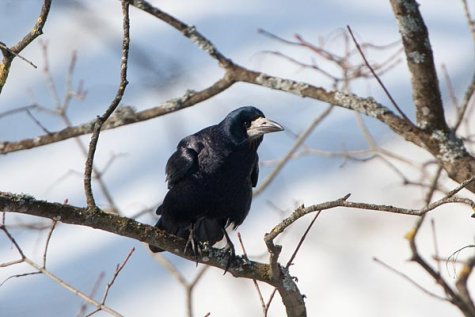Checking the nest sites
Photo: Arne Ader
Translation: Liis
The first rooks have arrived to the nest sites on Tartu Toomemägi
| Rook | Künnivares | Corvus frugilegus |
Where rook colonies nest, arrivals have already been noted, that is, in southern Estonia. Winterers have been remarkably few. The early arrival is partly explained by the shortage of good nest spots in the colonies. For latecomers border areas are left for nesting, surely more exposed to threats.
In the colonies straightening up and tidying of the nests will soon begin, no matter that nesting begins in April. The slightly larger male birds bring in nest material or pinch what is needed from the neighbours. The female bird is the nest builder and at the same time its guardian, watching that no one will occupy the works. Easy to guess that all this is conflict-laden and needs loud-voiced negotiations.
At some time we may notice that the colony is empty of birds. Flying out to forage is done “as one“, a more experienced bird may have discovered something edible. The colony life is a nuisance to people but is fascinating to observe.
Rooks are just a shade smaller than our native inhabitants the hooded crows. The migrants have a more slender body, longer wings and a less flapping flight image. The plumage is black, with a metallic sheen in the sun, the legs have “puff trousers“. The beak is strong, with a light base. Adult birds have a bare beak base, that of the young birds is covered with facial feathers until the second summer.
The arriving rooks carry seven weeks of winter in their tail, or so it was said decades earlier. Let us see how the rook prediction turns out; they have started to arrive earlier from year to year.









